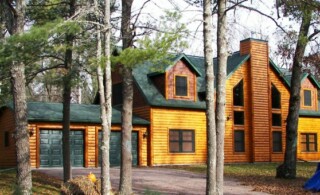Preparing your home for the market is a big job. Your first task is to create a beautiful real estate listing that will lure potential buyers. The most effective listings contain photos and videos that invite viewers on a virtual tour of your home, but it’s not as simple as grabbing your camera and posting your home for sale.
To create the most engaging photos and videos, you’ll need to start by cleaning, organizing, and staging your home. Then, a few key strategies will help you capture beautiful images that will make your home stand out in real estate listing photos and virtual tours. Our guide walks you through every important step (there are 13 essential to-dos).
Prep Your Home for Listing Photos and Videos
Before the camera starts rolling or the shutter clicks, be sure to make your home look its best. Start on the outside and work your way in to make the process as efficient as possible.
1. Focus on Curb Appeal
Enhancing the outside of your home gives a great first impression in real estate listings. Be sure to:
- Spruce up worn or broken exterior features, including paint, windows, doors, and mailboxes
- Mow your lawn and fill in bare patches
- Tend to your garden and flower beds
- Remove dead elements, like tree branches, flowers, and shrubs
- Declutter your yard
- Add finishing touches, such as potted plants, a welcome mat, and new house numbers
2. Make Necessary Home Repairs
Visible damage in your home is a major red flag to virtual viewers. Take care of anything that is noticeably broken or run down before snapping photos or recording videos.
Also keep in mind that if your home needs major repairs, they may be deal breakers for potential buyers, even if they’re not apparent in a virtual home tour. If your home is due for a big project, like a new roof or water heater, talk to your agent. They may recommend fixing these issues before listing your home.
3. Clean Every Surface
One of the easiest ways to show you’ve taken good care of your home is to deep clean it. Work from top to bottom to make sure you take care of every surface and don’t miss particles that fall to the floor from high areas. Be sure to:
- Wipe the dust from ceiling fans
- Clean cobwebs from ceiling corners
- Wipe down crown moulding
- Wash windows
- Dust cabinets and shelving
- Clean countertops and appliances
- Clean tile, carpet, and hardwood floors
4. Declutter Your Home
Clutter is just as distracting as dirt and grime. Be sure to declutter and organize every room in your home as much as possible. If you still find you have a house full of “stuff,” consider moving some of your items into a storage unit, donating, or recycling them.
5. Depersonalize Each Room
Remove personal items. This helps potential buyers envision their own lives in your home, even if you’re still living in it. Be sure to eliminate:
- Family photos
- Children’s artwork
- Diplomas
- Trophies
- Controversial or kitschy decor
- Hobby-related items
6. Stage Your Home
Cleaning, decluttering, and depersonalizing are important elements of staging your home to sell. To make a bigger impact, assess the layout of your home’s furniture and decor. The key is to make your spaces look as open and inviting as possible. Arrange your furniture to create an open flow, and add pops of color with plants, fruit and neutral decor.
Home staging is also helpful for creating natural focal points for your photos and videos. For example, a coffee table placed in the center of your living room between the sofa and TV makes a beautiful, balanced image.
7. Keep Pets Out
Pets and pet-related items can be a red flag during virtual home tours. Dogs, cats, and other critters that freely wander your home can worry buyers that there are damages and odors they can’t see on your listing. Animals in cages and tanks are just as distracting. Whenever possible, find a place for your pets to stay when you’re taking photos and videos.
Take Eye-catching Photos and Videos
Once your space is ready, take photos and videos that will make viewers feel like they’re walking through your home.
8. Use Reliable Equipment
Professional cameras are best when it comes to capturing still images or video for your listing. If possible, work with a professional photographer and videographer. Pros have high-resolution cameras and experience finding the right angles to make your home look its best. They can also edit your images as needed to really make them stand out on real estate websites. Your real estate agent can refer you to a pro in your area.
If you DIY the job, make sure your camera and any other equipment are in working order. You should be able to capture clear, uninterrupted video and sound. Even if you use your phone, make sure the camera and microphone are working properly. Do a test run before every film or photo session to make sure your images look great.
9. Showcase the Natural Flow of Your Home
Even when you’re relying on still images alone, it’s important to offer a guided tour that makes viewers feel like they’re walking from one room of your home to the next from start to finish. Start outside and work your way in. Show off your home’s natural flow by following the route you’d take if you were leading people through it in person. Jumping from one area to another makes it hard for online visitors to get a true feel for your home.
Be sure to take your photo and film images from natural viewpoints. Your camera should be held at eye level rather than from too high or too low in the room. Doing so allows home buyers to get a more accurate view of the room.
Lastly, make sure you have floorplan images for your listing. These help connect the dots of your home’s exact layout.
10. Shoot During the Day
Be sure to keep interior lights on as you film but take advantage of daylight. Open curtains and shades to allow as much sunshine in as possible.
In spaces without much natural light, turn on every overhead bulb when you’re ready to pick up your camera. If the space still doesn’t look well-lit, add floor or table lamps to brighten things up.
However, be mindful of areas where less is more. For example, mirrors that produce a glare when they’re in the spotlight are distracting. In that case, be strategic with your camera angles.
11. Check Your Video Footage
Before posting a video to your real estate listing, look at it with a critical eye. Picture yourself as the shopper by making sure:
- The video is smooth and in focus from start to finish
- It’s easy to see the home’s flow
- There is enough time to fully view each room
12. Choose Music Carefully
Adding background music to home-tour videos can help create a more engaging experience. Be sure to pick something upbeat but not too stimulating. It should create a calming and uplifting ambiance, not overwhelm viewers. Look for royalty-free music.
13. Plan for Live Tours
Most online home tours are photos only or video slideshows of photos. This helps prevent distractions like shaky camera work, bad lighting, and kids and pets in the background. However, some buyers may request a live walk-through to get a more accurate idea of your space.
If you’re offering live virtual tours of your home, treat your viewers as if they were visiting in person by using these tips:
- Be ready to pause. If shoppers want to spend more time in a space than you’d planned, accommodate them.
- Take detours. Be willing to visit rooms you’ve already shown and areas you didn’t plan to show.
- Have answers ready. Know the answers to common buyer questions, like the square footage of rooms.
Did these tips help you? Let us know how you would stage and photograph a home in the comments below.

 Raise the Value of Your Home with These 7 Remodeling Tips
Raise the Value of Your Home with These 7 Remodeling Tips  Increase Your Curb Appeal
Increase Your Curb Appeal  5 Reasons Your House Isn’t Selling
5 Reasons Your House Isn’t Selling  Home Appraisals
Home Appraisals  Second Houses and Investment Properties
Second Houses and Investment Properties 

Are You Familiar With This Topic? Share Your Experience.